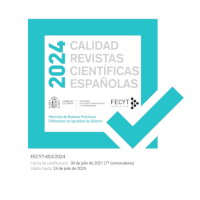Paradisiacal Hells : Subversions of the Mythical Canon in Neil Gaiman's "Neverwhere"
DOI :
https://doi.org/10.18172/cif.2111Mots-clés :
Postmodernism, Mythical Structure, Monomyth, Neil Gaiman, "Neverwhere"Résumé
According to certain theories, Postmodernism makes a conscious use of the cyclical nature of mythical narrations in response to the anxieties of fragmentation and isolation of the self. Hence, Postmodernism, through its own mechanisms and techniques, offers reconceptualizations of the mythical structure applied to the contemporary social conditions. The aim of this article is to analyse how Neil Gaiman consciously employs a mythical structure in his first novel, "Neverwhere" (1996), and how he subverts the final aim of this pattern. My contention is that "Neverwhere" is a postmodernist novel whose structure follows the cyclical pattern of the Campbellian monomyth. But the cyclical nature of the myth is utterly transformed in the novel.Téléchargements
Téléchargements
Publié-e
Comment citer
Numéro
Rubrique
Licence
Les articles appartiennent à leurs auteurs respectifs qui accordent à la revue le droit de première publication, l’autorisation de la revue n’étant pas nécessaire pour leur diffusion une fois publiés. Une fois la version de l’éditeur publiée, l’auteur est tenu de s’y référer dans les versions archivées dans les dépôts personnels ou institutionnels.
Il est conseillé aux auteurs/s d’archiver la version de l’éditeur dans des dépôts institutionnels.
La revue permettant à d'autres de réutiliser les ouvrages selon les conditions de la licence CC Attribution 4.0 International (CC BY 4.0)














